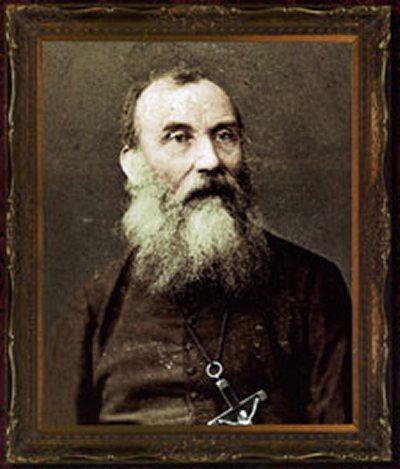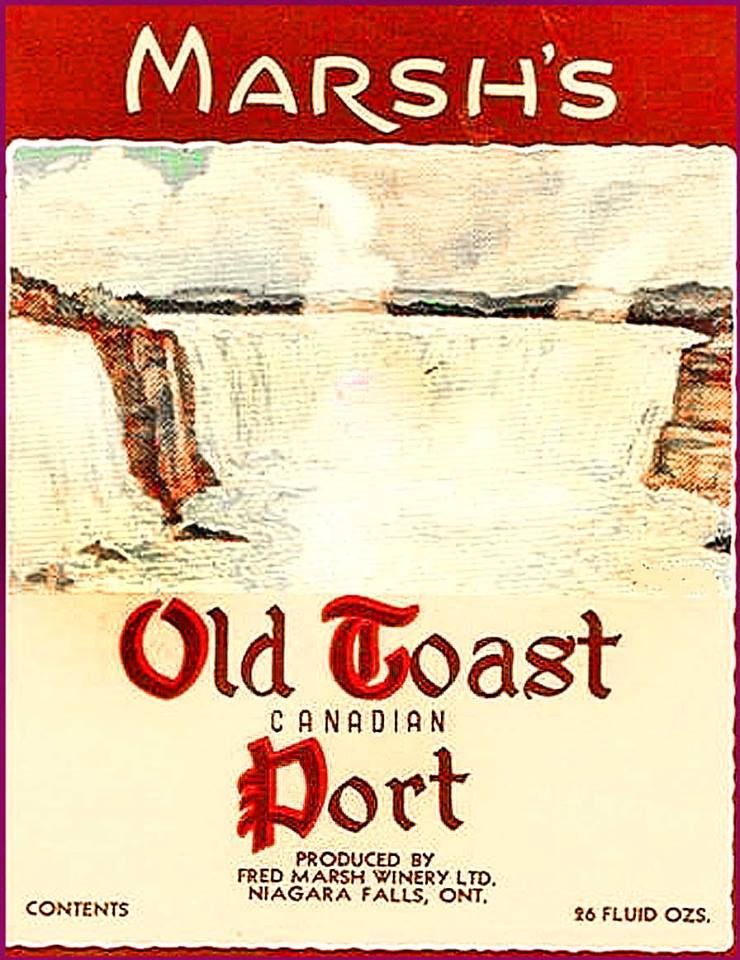Robert Bell's
Wines of Canada
Since 1992
The Beginning of Wine Making in Canada

Photo credit Scott
Brenner
Back, way back, around the year 1001AD Leif Eirikson - aka: Leif the Lucky and Bjarni Hejolfson left Iceland and sailed to the shores of Newfoundland. Leif found (what he believed to be) wild grapes in the vicinity and called the place Vinland. The uncovered ruins of the Vinland community at L'ans aux Meadows indicates the Vikings were the first to make wine in what later became Canada
It was not until 1535 when Jacques Cartier sailed down the St. Lawrence River where he found wild grapes in abundance. The Jesuits followed Cartier to the new world bringing with them sacramental wine. They soon ran out and began producing wine of their own. The French were producing outstanding wines back home and had little interest in a commercial adventure. Even Jacques Boisdon, living in Quebec City, and who opened the first tavern in 1648 had no interest in working a vineyard.Many amateurs tried their hand at producing wines but the wild Vitis riparia and Vistis labrusca were of poor quality compared to european wines. Father Bruyas tried planting new varieties around 1619, as did many others over the next few years, their efforts failed. But through cross pollination the first American Hybrids were created.
The history of winemaking in Nova Scotia can be traced back to the year 1611 when French settler Louis Hébert planted the first vineyard in Bear River.
The true story of Canadian wine making may have begun with Johann Schiller, a German who served with the 29th Regiment of Foot in Quebec in 1784. By 1811 he had moved to Ontario's Niagara regionobtaining 400 acres. Having worked at winemaking in the Rhine, he began growing grapes and producing his own wine. He obtained hybrids from Pennsylvania and began to supply the needs of his neighbours. His wines were very much appreciated, he is considered to be the father of the Canadian Wine Industry. Unfortunately his success was short lived as Schiller died in 1816. Schiller's sons sold the property.
It was sold again in 1864, bought by an aristocratic Frenchman, Justin de Courtenay, who had unsuccessfully tried to replicate the taste of red Burgundy in Quebec. He had better luck in Ontario and his Gamay won a prize at the 1867 Paris Exposition. de Courtenay formed a company called Vine Growers Association. He introduced Clinton and Isabell grapes his label Clair House became the largest in Ontario
Father Charles PandosyThe first vineyards in British Columbia were planted in the 1860's at the Oblate Mission of Father Charles Pandosy near Kelowna in the Okanagan, but it wasn't until the 1930's that the first winery was established in the valley.
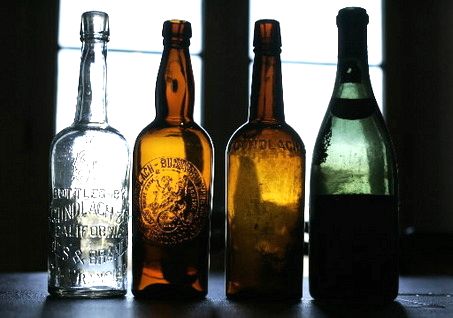
Wine bottles from the 1890's
Winemaking in the 1870's, 80's and 90's, was more of a kitchen or basement hobby. The wines were sold out the back door or through the local drug store. Two farm wineries owned by John Kilborn and W.W. Kitchen of Grimsby may have been the first to advertise their wines. One problem these winemakers faced was the grapes. The native hybrids like Catawba and Isabella were too low in fructose and too high in acidity.
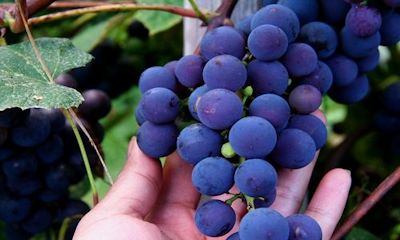

Another variety gaining popularity was the Concord grape. Back in 1836 in the New England town of Concord Ephram Wales Bull planted a grape seed from the wild Laabrusca grapes. The result was the grape he named Concord. Bull failed to make a commercial success of the Concord as others also grew the grapes. His tombstone read He sowed but others reaped. However the Concord did not make great wines it was better used for producing jams and jellies. Despite its lack of winemaking ability the concord grape was the backbone of the industry until the 1940's. Remember Baby Duck
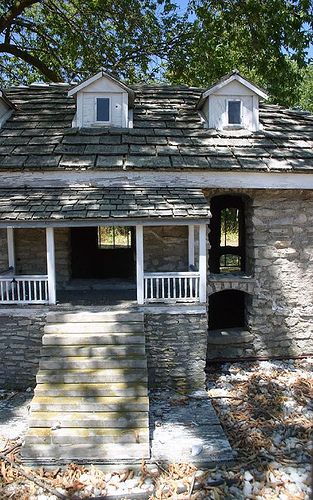 |
|
A grocer by the name of Major J.S. Hamilton became interested in the wines of Pelee Island. In 1871 he was granted a royal charter to sell wines and liquor. In 1874 he entered into agreement with the Pelee Island growers and moved the actual winemaking operation to Brantford. The J.S Hamilton and Company Limited absorbed the Pelee Island Wine and Vineyard Company in 1909. Forty years later in 1949 It was all sold to the London Winery
Back in British Columbia the Oblate Father's vineyard at their mission near Kelowna was producing wine starting in the 1920's. Father Charles John Felex Adolphe Marie Pandosy was the founder of the first settlement in the Okanagan Valley, the planter of the first apples and grapes. He built the first school for settlers and native children, and acted as counselor, confessor, agriculturalist, musician and sports coach. He soon became known as a peace-maker and defender of justice; especially for the underdog.
It was the gold rush that brought settlers to the Okanagan. When the gold panned out. Orchards were planted allowing for the valley to prosper for many years. At the northern end of the Okanagan the town of Salmon Arm was founded officially in 1890. Pictured above is the first commercial orchard, the McGuire Orchard in 1891. It is believed that the earliest record of commercial grape production in BC was in Salmon Arm, by W.J. Wilcox.
The Church was also responsible for early winemaking in Quebec. Samuel de Champlain who planted vines near Quebec City in 1608 was likely the first to try viticulture in Quebec. The Church was also responsible for early winemaking (1900's) in Quebec. In Point Claire a man known only as Mr. Menzies created a large (for those days) vineyard called Beaconsfield. In Quebec the first licenses to operate vineyards were issued in 1980In the 1860's through to prohibition the main focus on winemaking was in Ontario developing and experimenting with grapes and techniques to conquer the local weather conditions. This led to the introduction of the Niagara Grape. a cross between Concord and Cassady. Its' presence was first recorded in 1882. By 1890 there were 41 commercial wineries across Canada, of which 35 were in Ontario.
A significant event occurred in 1875 when George Burns started a winery in St Catherines, Ontario. The company with a long name designed to clearly state its purpose was The Ontario Grape Growing and Wine Manufacturing Company Limited. It operated until 1988 under the name Barnes Wines. A year later in 1876 Thomas Bright and F.A. Shirriff opened a winery in Toronto. It was called the Niagara Falls Wine Company. In 1890 they moved it to Niagara Falls and in 1911 changed the name to T.G Bright. The name can still be found today, it is a brand name of Vincor Canada.
Fred Marsh Winery Limited at Niagara Falls founded by Fred Marsh in 1929.And then along came WWI and Prohibition followed by the 30's and 40's
Related Pages:
More in depth information the People and the Wineries
London Winery, Vincor, Baby Duck,History of Icewine
Home | Sitemap| History |Gallery | Contact | ©2019 Robert A Bell
